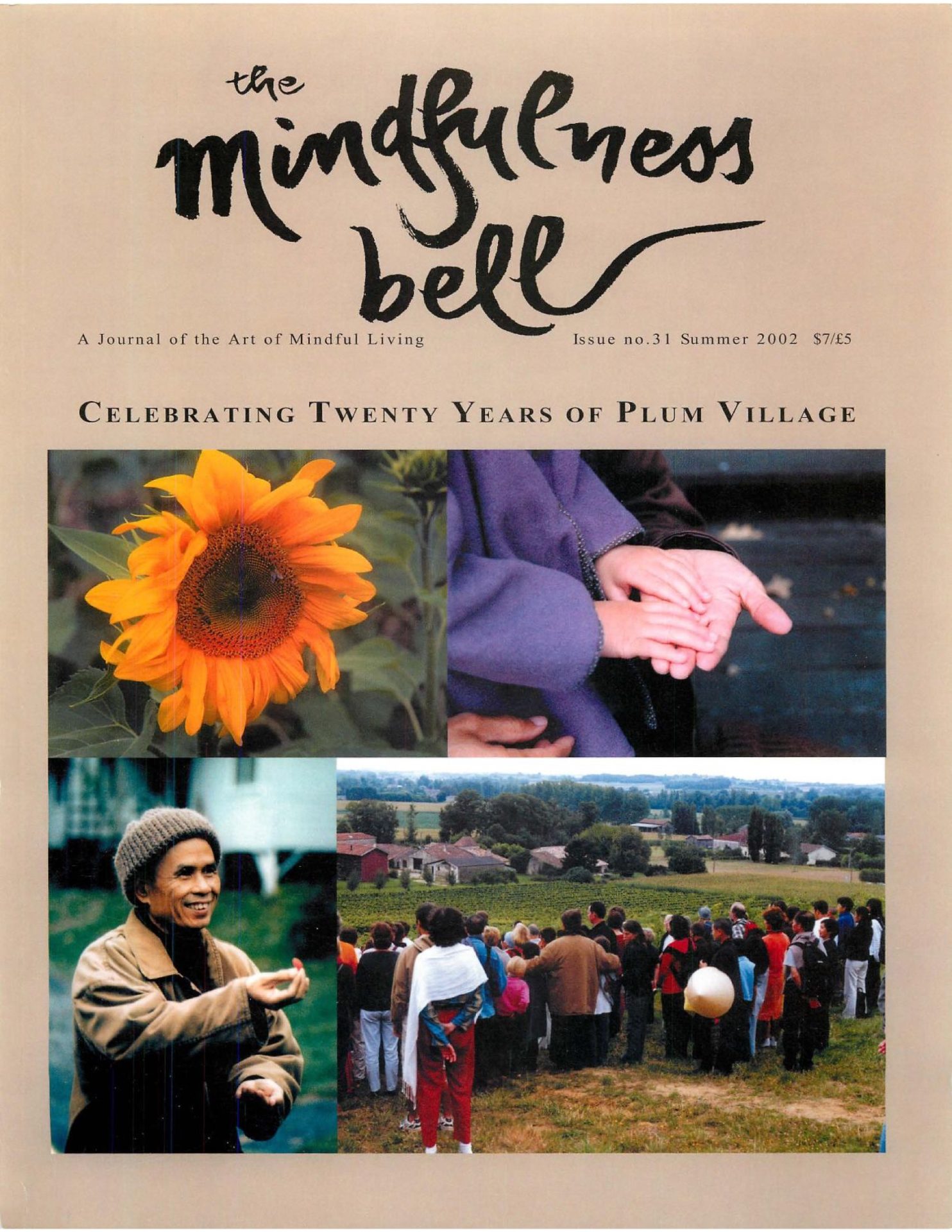By Megan Lawlor
At my first retreat with Thay and the monks and nuns of Plum Village, I was eleven years old. Now almost thirteen years have passed by, yet I still remember each moment clearly.
As children, we spent most of our time at the retreat playing endless games of baseball and frisbee outside. “We struggled to keep silent through each meal and begged unsuspecting adults to please, please take us to McDonalds. “We explored every corner of the retreat center and chose our favorite places to play. If there was a certain element of freedom at those retreats.
By Megan Lawlor
At my first retreat with Thay and the monks and nuns of Plum Village, I was eleven years old. Now almost thirteen years have passed by, yet I still remember each moment clearly.
As children, we spent most of our time at the retreat playing endless games of baseball and frisbee outside. "We struggled to keep silent through each meal and begged unsuspecting adults to please, please take us to McDonalds. "We explored every corner of the retreat center and chose our favorite places to play. If there was a certain element of freedom at those retreats.
As a part of the Sangha, I remember sitting in the front row of every dharma talk and feeling as if Thay was speaking directly to me. l remember walking with the adults during outdoor walking meditation and fee ling completely frustrated and confused at the strange, turtle-like pace . And I loved creating skits with the other children that we performed for the Sangha at the end of each re treat. "Buddha Meets the Jetsons" was our first, brilliant masterpiece. We spent hours practicing a skit in which Buddha is whisked away into the future and spends an afternoon with the Jetson family. Of course, the Jetsons were shocked by Buddha's mindful behavior, and we were delighted with the laughter we received.
Last year, after almost thirteen years of learning with Thay, I visited Plum Village for the first time. I had imagined it and heard of its orchards and lotus ponds, but the opportunity to finally see it with my own eyes was wonderful. It was there that I realized how important Thay's teachings have been throughout my life.
A gatha that I learned in fifth grade still remains a sol id place to which I return, although I may have changed the words:

In, out. Deep, slow.
Calm, peace. Smile, release.
Present moment. Wonderful moment.
When I was little, I must have memorized this poem without realizing it. Now, whenever I am nervous or upset, it surfaces in my mind and has an immediate and calming effect. l believe that the opportunity to hear Thay's teachings has taught me so much. When I read his words I can imagine his voice, as if he is in the room reading to me. His presence as a teacher, and as almost a family member, has been incredible.
Today, many years after my first retreat, I am teaching my first year of high school history at a public school on the south side of Chicago. Confronted by children in grown up bodies and the struggles that they face each day just to get to school , I am often overwhelmed. There are times in my classroom when chaos arises and remembering how to stop, take a few deep breaths, and then smile at the children who are expecting me to yell changes everything .It is still the most simple, and the most difficult practice. But I am practicing every day by listening to these beautiful children's stories and dreams.
It is interesting to go to retreats now and no longer sit in the front row during dharma talks or stand up part way through the talk to go outside to play. I remember how it felt when I look at the children, and I smile. Then, I listen to Thay for the children that I am now teaching, in the hopes that I can give some of his insight and compassion to them.

Megan Lawlor is twenty-four-years-old. Her father, Jack Lawlor is a Dharma Teacher.

